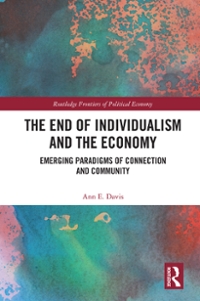Question
This is in continuation to my earlier question on Variations in Cournot Competition In lecture we saw the Cournot competition model for two firms
This is in continuation to my earlier question on Variations in Cournot Competition " In lecture we saw the Cournot competition model for two firms with the same cost function. Now, we are going to consider asymmetric cost functions. Assume that demand for a good is given by P = a - bQd (Qd is quantity demanded), and that there are 2 firms competing in quantities. Both have no fixed costs and a constant marginal cost. Firm 1 has a marginal cost C1, and firm 2 hasa marginal cost C2. We have that a > C1 > C2."
I. Now let's go back to the case where all firms have the same cost function. In class we saw the Cournot competition model for two firms. Now, we are going to get you through the Cournot model with three firms. Assume that demand for a good is given by P = a - bQd , and that there are 3 firms competing in quantity with a constant marginal cost c < a.
Write down the maximization problem of a representative firm in the market. Solve for the reaction function of this firm: how the optimal quantity produced depends on the quantity produced by the other two firms in the market.
To verify that you have found the correct reaction function, compute the optimal q1 if q2 = 40, q3 =60, a = 4, b = 0.01, and c =2. (note that this is not necessarily and equilibrium.)
q1 =
II. In the three-firm case, what will be the equilibrium price and the total quantity produced in the market?
To Verify that you have found the correct equilibrium, compute p and Q if a = 4, b = 0.01 and c = 2.
P =
Q =
III. How does this equilibrium compare to the perfectly competitive case?
oCournot competition results in an efficiency gain relative to perfect competition
oCournot competition results in an efficiency loss relative to perfect competition
IV. Intuitively, what will happen in this market when the number of firms goes to ?
oThe market converges to perfect competition
oNone of the above
oEfficiency losses become arbitrarily large
oCournot competition will become the more realistic model
oPrice will approach zero
Step by Step Solution
There are 3 Steps involved in it
Step: 1

Get Instant Access to Expert-Tailored Solutions
See step-by-step solutions with expert insights and AI powered tools for academic success
Step: 2

Step: 3

Ace Your Homework with AI
Get the answers you need in no time with our AI-driven, step-by-step assistance
Get Started


